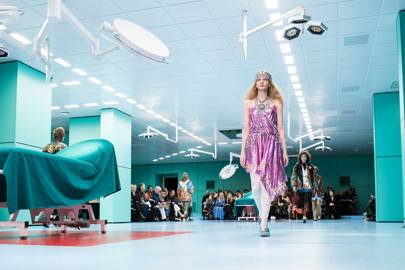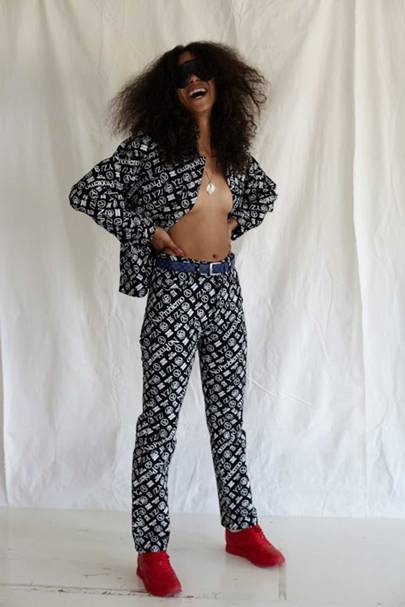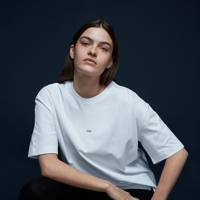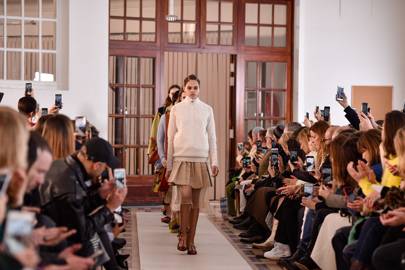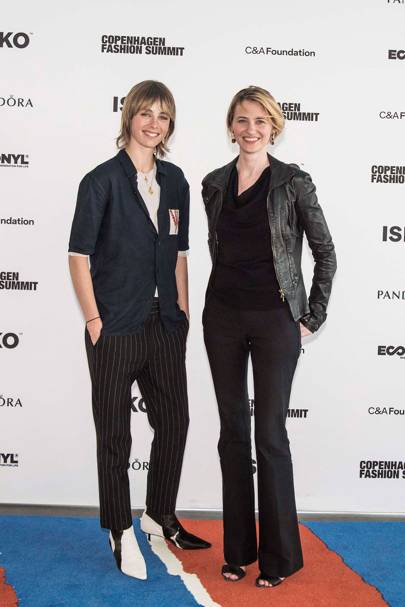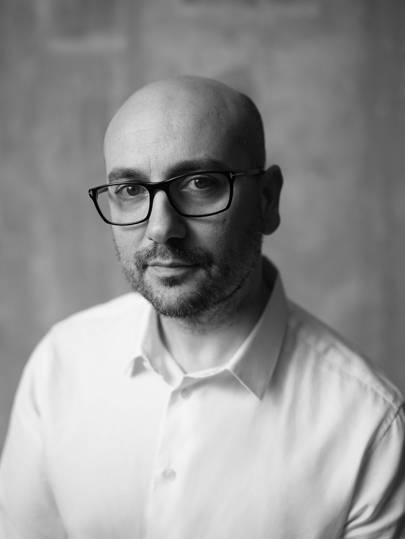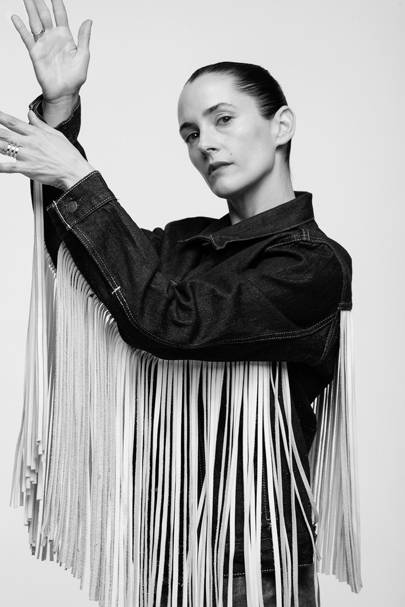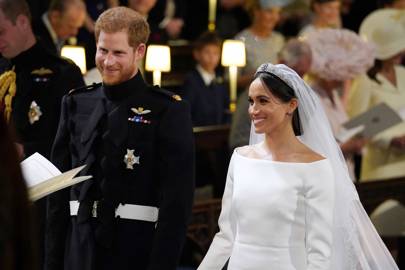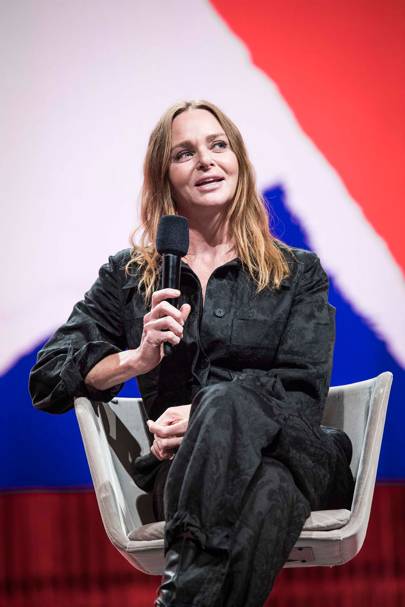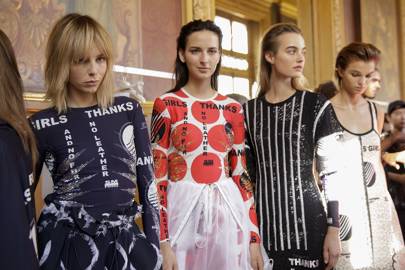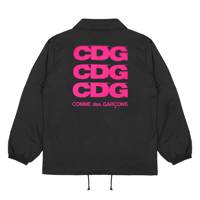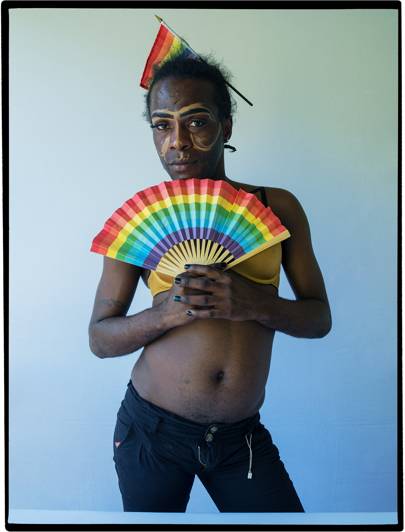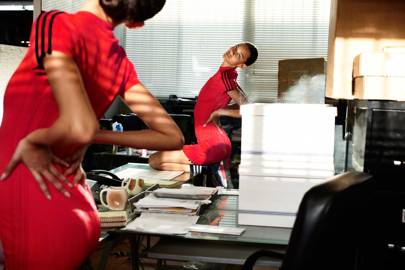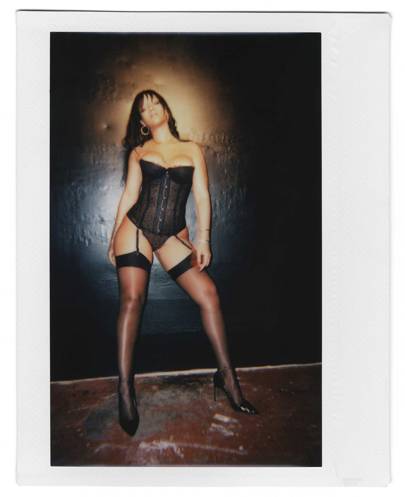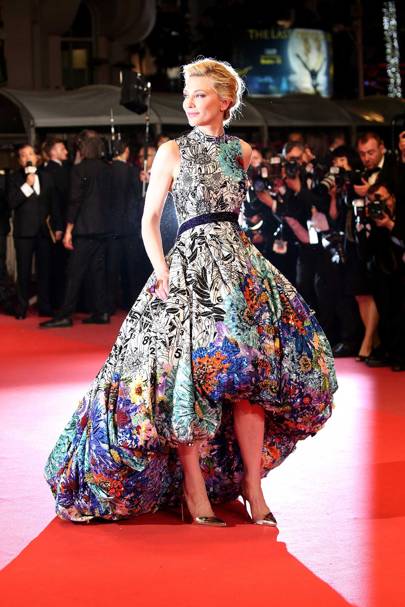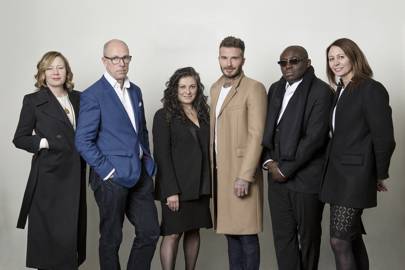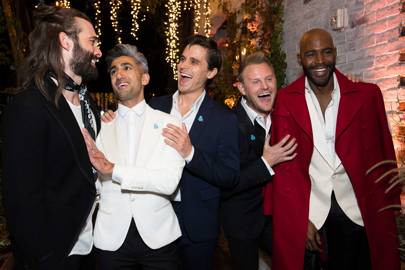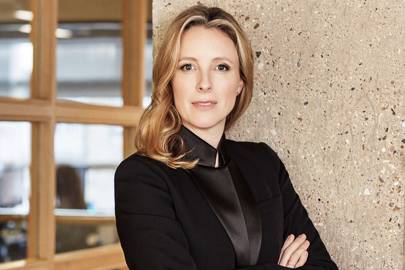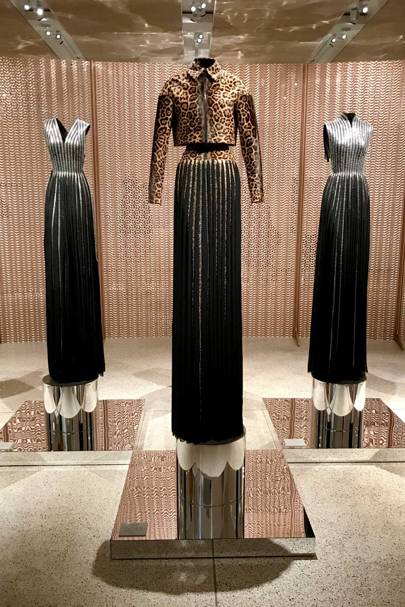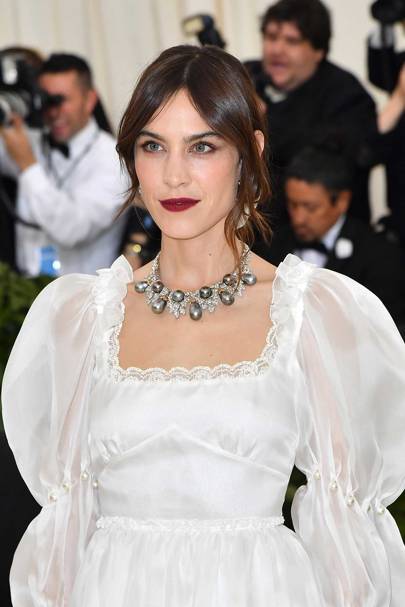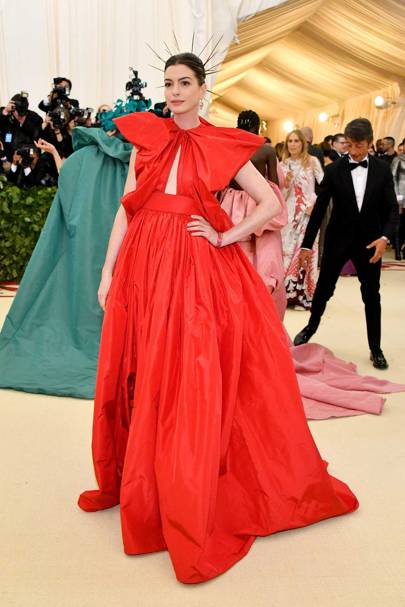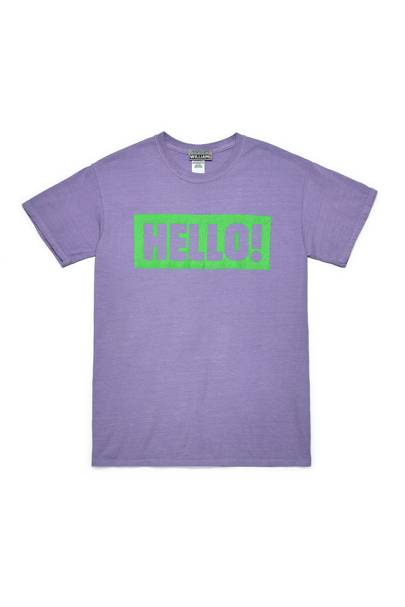Following swiftly on from deservedly winning the BFC/Vogue Designer Fashion Fund earlier this month, today, Molly Goddard has announced the news of her first book. Photographed by Tim Walker and styled by her sister, Alice Goddard, Patty features pieces from the beloved Brit designer’s archive, from her 2012 BA collection to her spring/summer 2018 show. Family, friends and models are captured in a series of arresting images, and Molly’s instantly recognisable colourful, frothy creations are piled on and reimagined to take on new sculptural forms. Launching at Dover Street Market London on May 17 2018, Patty was art directed by Jaime Perlman and includes portraits of Camilla Lowther, Lily Cole and Erin O’Connor.
Vogue sat down with Molly and Erin over afternoon tea at Claridges to discuss the book, how the duo first met and the joys of working together and with Tim Walker. Read some of their conversation below:
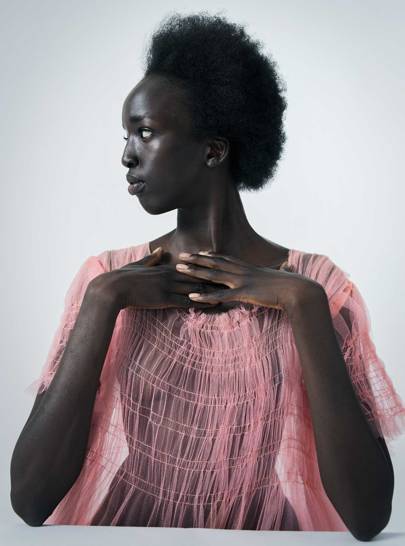
Molly: We were talking to my sister Alice about doing something and who we would want to do it with. So we asked Tim and he said yes which we didn't really think he would, but Alice had worked with him quite a lot. It was kind of crazy that he said yes, and also that we were very vague with what we wanted to do. We were like "we kind of want to do a book but we don't know what we want to do but we just feel like we've got so many clothes and so many interesting people that we work with it would just be nice to document all of it". We met up with him a couple times and had very calm, casual tea chats at his studio about what we wanted to do and then booked a studio for two days. I think it all happened very quickly. Tim was free and we were free and it was like, quick let's do it, because there were quite a lot of people that we would have loved to be in it. [To Erin] Did Tim ask you on the day? No, we asked you before, didn't we?
Erin: Yeah, you asked me before, you and Alice. I think it was over text. It was literally a couple of days before and then I think Tim backed it up with another text.
Molly: You turned up, and said: "Oh what are we doing?"
Erin: I really didn't know what I was getting into at all. But I was just bombarded by tulle and literally wrapped around for two hours and the challenge was to be as mobile as possible. I was getting drenched in these layers upon layers of colour and I don't think Tim and I had ever really done static portraits since we've known one another, they're very much alive. When you're given free reign because there are no rules, that's my kind of gig actually.
Molly: Yeah, fun!
Erin: I've always felt that way about you, Molly, since I met you, everything has always been quite last minute and organic and - I think it's brilliant because everything is so, so... I don't know, it's quite regimented I think, our industry now.
Molly: Was it at the Serpentine summer party that we met?
Erin: It was at the Serpentine, yes.
Molly: And you were like, "I love your clothes", and I was like [strong inhale] it's Erin!
Erin: Which I find really funny, because I knew you were you, but it just took me a moment to go up to you to tell you that. I've seen and worn many different designers for over two decades and there are some that stick out to you and some you respond to. You have the kind of imagination that I like to try and work with, so I kind of represent the final bit as it were, it's like the da-daa! And I thought, yes, there's a woman whose clothes I would wear in real life.
Molly: That's amazing, isn't it?
Erin: It's amazing to me, because it makes my role so much easier. It's like a painting, and you complete it. Your clothes are like paintings.
Molly: We did the Tim book last summer, a long time ago. And we said, 'Oh, let's get it out soon' and then we thought why are we rushing it, and then it became slower and slower and slower… Yeah, so that was kind of the first time we hung out.
Erin: Excuse me, no! When we did the fitting, in West London, and I met your mum and your sister and we were having a right old chat, and tried on a few different dresses...
Molly: But that wasn't pre-book?
Erin: Hold on, I thought I did the show first, and then we did the book!
Molly: It was book first, definitely, because we did the book I think in June or July, and then it was like, could we dare ask Erin to be in the show?
Erin: I was so glad you did, I really was, because I don't really do any shows any more just because there's a lot of really brilliant young women doing the shows now. But there's an element of couture to your clothing because it's performance, you cannot just walk up and down, it's a wasted opportunity. So, I thought right, let's get the sea legs on, and I was delighted when we went to that fitting because the first thing I saw was…
Molly: My crap studio!
Erin: No! I was backstage; biker boots! And it was sort of old school for me, in that, the clothes are literally made on my back, and I'm so used to that, it was very like the haute couture way of working, and I've only ever experienced clothes in that way, even for pret-a-porter actually because I'm extremely elongated, a lot of the time, if it allowed, the clothes were stretched for me.
Molly: It was the most fun.
Erin: You really enjoyed it, and I love that you did the rehearsal with us.
Molly: With the book, it wasn't about collections or seasons or clothes actually. The clothes were just props I suppose. Things were tied on and shoved on and strapped on and stood on top of or wrapped around; nothing was worn as it was meant to be.
Erin: It was just an endless creation. It wasn't about achieving the final thing, it was about the process of doing something and I always really miss that because everybody's obsessed with getting something right whereas with Tim, the joy's with the process, the magic, the nugget in the middle, you're working towards something and it's the movement there. And I always look at a photo as a performance too.
Molly: It was about people's personality. If someone came in wearing interesting clothes, someone was like "I really like what they're wearing", just shoot them in what they're wearing, so that was kind of part of it as well.
Erin: Literally, I was wearing a pair of tights... I think they were my tights and everything else from my knees to my hair to my chest to my head was covered.
Molly: You definitely are the star of the show. It was amazing watching you do it.
Erin: I think it's impossible not to love having a moment with people you love. Tim and I started working together 22 years ago, just to put it in perspective, so it's quite handy that you were working with him putting a book together, I wouldn't dare ask Tim to do a book! So it was lovely just to get everybody in one room! I used to love going to work and not knowing what was going to happen. I was genuinely really flattered to be asked to be a part of it, especially with all the other people you have there. I really wanted to stay and stalk Camilla [Lowther].
Molly: I know, Camilla was funny.
Erin: [Camilla's] got one of my favourite faces of all time. I mean it was the ultimate casting. None of them were wallflowers.
Molly: There's a brilliant, brilliant, brilliant... actually it is an outtake, but my guinea pig is in it, because the book is called Patty. We were like, what can it be called? What can it be called that's like totally ambiguous and no one's going to know what the fuck we're talking about?
Erin: Is your guinea pig called Patty?
Molly: Yeah, so the book is called Patty.
Erin: Did you dedicate it to Patty?
Molly: No, no, it's just called Patty!
Patty launches at Dover Street Market London on the May 17 2018. Copies will be available to purchase at select stores and via the Molly Goddard website.
